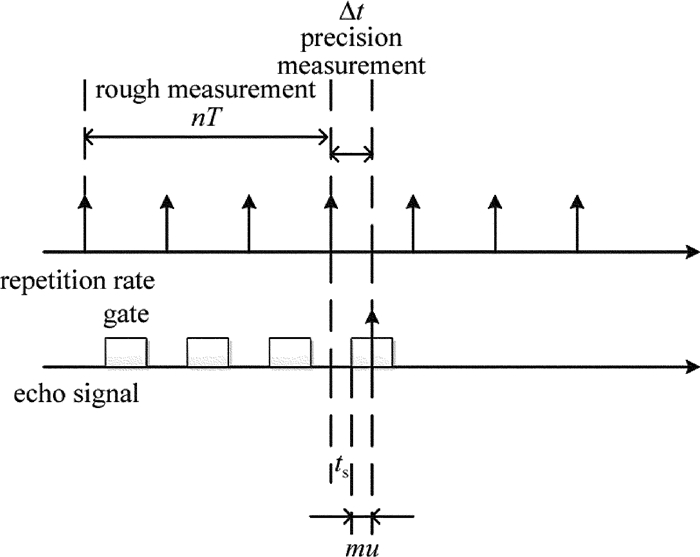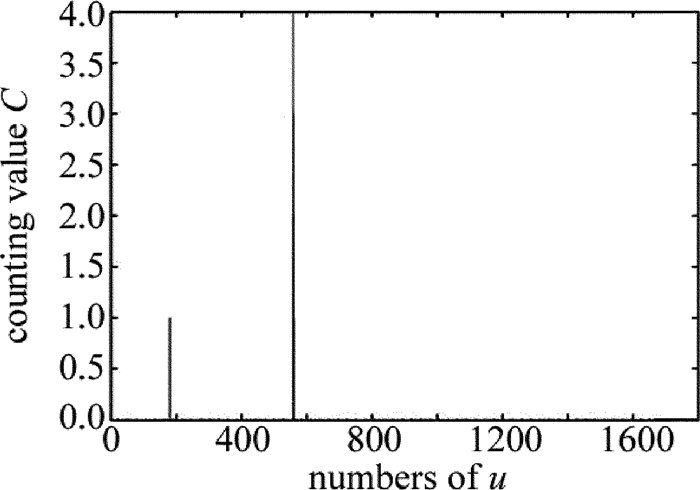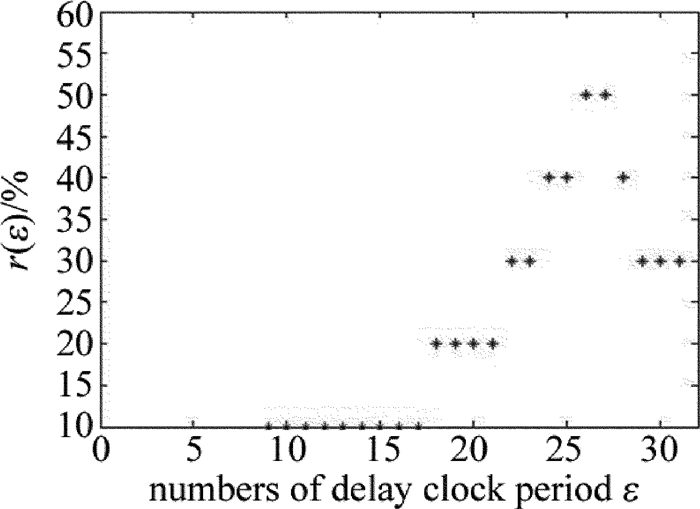Research of space-based photon counting laser detection for space debris
-
摘要: 为了满足空间碎片探测与精确定轨的需求,采用光子计数的高灵敏激光探测方法,讨论了盖革模式下雪崩二极管探测器的光子计数探测基本原理,并建立了引入探测器与空间碎片的相对径向速度的天基光子计数探测模型,进行了空间碎片光子计数激光探测的理论分析和仿真验证。结果表明,在可探测速度范围内,光子计数激光探测技术能有效探测到尺寸为10cm的空间碎片目标,测距平均误差为34.72cm。与传统地基雷达和光电探测手段相比,此技术测距精度能提高3个数量级,可有效降低航天器与空间目标碰撞的概率。Abstract: In order to meet the demands of space debris detection and precise orbit determination, by using high sensitive laser detection method with photon counting and the principle of photon counting detection of avalanche detector based on Geiger mode, space-based photon counting detection model was established on the relative radial velocity of detector and space debris. After theoretical analysis and simulation verification of photon counting laser detection of space debris, the results show that photon counting laser detection can effectively detect space debris(size of 10cm) and the average ranging error is 34.72cm. Its ranging accuracy could be improved 3 orders of magnitude compared with world traditional ground-based radar and photon-electronic technology. It can effectively reduce collision probability of spacecraft.
-
Keywords:
- laser technique /
- photon counting detection /
- simulation /
- space debris
-
-
Table 1 Detection results of space debris at different relative radial velocities
velocity/(m·s-1) distance/km target detection error of measurement/cm 500 200 success 29.17 1000 200 success 26.67 2000 200 success 48.33 2500 200 success 104.17 3500 200 success 35.84 5000 200 success 203.34 8000 200 failure -
[1] JIN W, KONG D Q, SUN M G, et al. Study of space debris observation using ground-based radar based on antenna arraying techniques[C]//Proceeding of 8th National Workshop on Space Debris. Beijing: China Academy of Launch Vehicle Technology, 2015: 75-78(in Chinese).
[2] WANG X W, LIU J, WU X B, et al. Space objects long-term evolution model and the first analysis[C]//Proceeding of 8th National Workshop on Space Debris. Beijing: China Academy of Launch Vehicle Technology, 2015: 238-244 (in Chinese).
[3] BAUER W, ROMBERG O, WIEDEANN C, et al. Development of in-situ space debris detector[J]. Advances in Space Research, 2014, 54(9): 1858-1869. DOI: 10.1016/j.asr.2014.07.035
[4] YIN J F, LI Zh, LIN Q, et al.Study on space debris detection radar and its observation efficiency carried by LEO spacecraft[C]// Proceeding of 8th National Workshop on Space Debris. Beijing: China Academy of Launch Vehicle Technology, 2015: 68-74 (in Chinese).
[5] KIRCHNER G, KOIDL F, FRIEDERICH F, et al. Laser measure-ment to space debris from Graz SLR station[J]. Advances in Space Research, 2012, 51(1):21-24. http://www.sciencedirect.com/science/article/pii/S0273117712005492
[6] GOTTLIED R G. SPONAUGLE S J, GAYLOR D E. Orbit determination accuracy requirements for collision avoidance[C]//Proceeding of the 11th Annual AAS/AIAA Space Flight Mechanics Meeting. Santa Barbara, CA, USA: AAS/AIAA, 2001: 1105-1121.
[7] GREENE B.Laser tracking of space debris[C]//Proceeding of 13th International Workshop on Laser Ranging Instrumentation. Washington DC, USA: NASA, 2002: 198-204. https://cddis.nasa.gov/lw13/docs/presentations/adv_green_1p.pdf
[8] PROCHAZKA I, JAN K, JOSEF B, et al. Photon counting detector for space debris laser tracking and lunar laser ranging[J]. Advances in Space Research, 2014, 54(4): 755-758. DOI: 10.1016/j.asr.2014.04.021
[9] LI Y Q, LI Zh L, FU H L, et al. Experimentation of diffuse reflection laser ranging of space debris[J]. Chinese Journal of Lasers, 2011, 38(9):0908001 (in Chinese). DOI: 10.3788/CJL
[10] WYMAN P W. Laser radar range equation considerations[R]. Washington DC, USA: Naval Research Laboratory, 1969: 20-22.
[11] DAI Y J. The principle of lidar[M]. Beijing: National Defend Industry Press, 2002: 10(in Chinese).
[12] HOU B L, HUANG G H, KUANG Y W, et al. Research on photon counting laser ranging technology[J]. Science Technology and Engineering, 2013, 13(18): 5186-5190(in Chinese). http://www.wanfangdata.com.cn/details/detail.do?_type=perio&id=jgjs201703002
[13] STEINAVALL O, CHEVALIER T. Range accuracy and resolution for laser radars[J]. Proceedings of the SPIE, 2005, 5988: 73-88. DOI: 10.1117/12.630622
[14] JIANG H J. Statistical properties of high repetition ratepulse laser radar range and its image qualityevaluation[D]. Nanjing: Nanjing University of Science & Technology, 2013: 18-19(in Chinese).
[15] LUO H J, ZHOU R L, ZHANG Y T. Theoretical analysis of detection performance and range accuracy of photon ladar[J]. Laser Technology, 2014, 38(3): 411-416(in Chinese). http://www.wanfangdata.com.cn/details/detail.do?_type=perio&id=jgjs201403028
[16] GONG W. G-APD arrays—a three dimensional imaging detector with single photon sensitivity[J]. Laser Technology, 2007, 31(5): 452-455(in Chinese). http://en.cnki.com.cn/article_en/cjfdtotal-jgjs200705001.htm
[17] GATT P, HENDERSON S. Laser radar detection statistics: a comparison of coherent and direct detection receivers[J].Proceedings of the SPIE, 2001, 4377:251-262. DOI: 10.1117/12.440113
[18] GOODMAN J. Some effects of target-induced scintillation on optical radar performance[J]. Proceedings of the IEEE, 1965, 53(11): 1688-1700. DOI: 10.1109/PROC.1965.4341
[19] JOHNSON S, GATT P, NICHOLS P. Analysis of geiger-mode APD laser radars[J]. Proceedings of the SPIE, 2003, 5086: 359-368. DOI: 10.1117/12.486384
[20] SPINELLI A, LACAITA A. Physics and numerical simulation of single photon avalanche diodes[J]. IEEE Transaction on Eletron Devices, 1997, 44(11): 1931-1943. DOI: 10.1109/16.641363
-
期刊类型引用(3)
1. 张亚男,牛春晖,赵爽,吕勇. 近红外激光对图像传感探测器的干扰研究. 激光技术. 2020(04): 418-423 .  本站查看
本站查看
2. 刘贺雄,周冰,贺宣,高宇辰,范磊. APD对湍流大气中激光的双重随机探测过程. 激光技术. 2019(04): 35-39 .  本站查看
本站查看
3. 刘贺雄,周冰,高宇辰. APD探测系统的噪声特性及其影响因素研究. 激光技术. 2018(06): 862-867 .  本站查看
本站查看
其他类型引用(2)




 下载:
下载:


